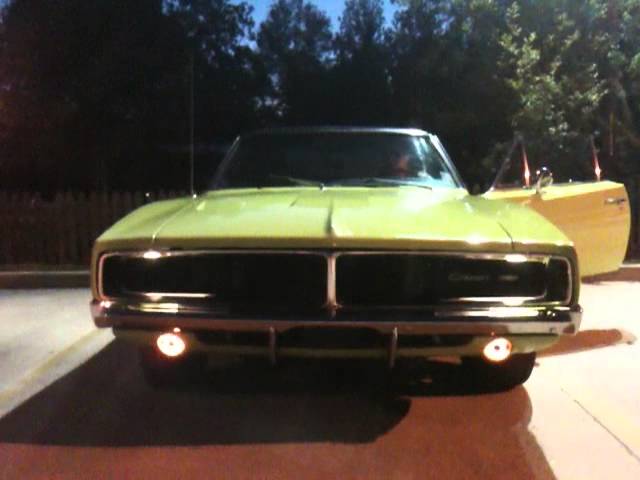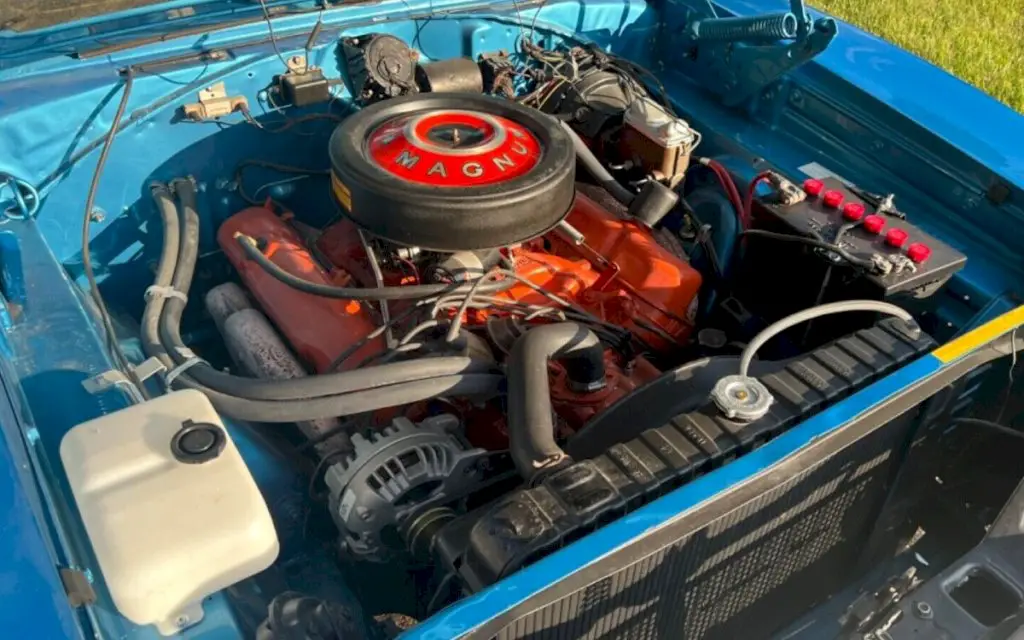The Dodge Charger 1969 is a classic American muscle car that has become an icon in automotive history.
The 1969 Dodge Charger is considered one of its era’s most desirable and recognizable muscle cars. Its striking design, powerful engines, and cultural impact have made it an enduring icon in the automotive world. Here are some notable aspects of the Dodge Charger from that year:

1. Design
The 1969 Dodge Charger had a range of body styles and design features that contributed to its iconic appearance. The combination of the Charger’s fastback roofline, hidden headlights, and aggressive front-end styling contributed to its iconic and menacing appearance. Main design elements:

Fastback Roofline: The Charger 1969 featured a distinctive fastback roofline that sloped smoothly down to the rear of the car. This design element gave the Charger a sleek and aerodynamic look.
Hidden Headlights: One of the defining features of the 1969 Charger’s front end was its hidden headlights. The grille was divided into two sections, and the headlights were concealed behind retractable covers, adding to the car’s aggressive and sleek appearance.

Front Grille: The front grille of the Charger 1969 was divided by a center divider with the Dodge logo. It had a rectangular shape with horizontal bars that extended across the width of the car.
Recessed Rear Window: The rear window of the Charger was recessed into the rear body panels, which contributed to the car’s aerodynamics and added to its overall aesthetic appeal.

2. Body Styles
Charger Hardtop: This was the standard two-door hardtop version of the Charger with a pillarless design and a sleek profile.
Charger R/T (Road/Track): The Charger R/T was a high-performance variant that featured additional design elements, such as a distinctive hood scoop, racing stripes, and “R/T” badging.

Charger SE (Special Edition): The Charger SE had a more luxurious focus, featuring upscale interior options and additional exterior trim accents.
Charger Daytona: The Charger Daytona was a limited-production, high-performance version of the Charger. It featured a unique aerodynamic nose cone and a large rear wing for increased downforce and stability at high speeds.

Charger 500: The Charger 500 was an intermediate model between the standard Charger and the Charger Daytona. It featured a modified front grille and aerodynamic enhancements but lacked the extreme styling of the Daytona.
3. Performance
The Charger 1969 was available with a range of engine options, including:
318 cubic inch V8: This was the base engine option, producing around 230 horsepower.
383 cubic inch V8: The 383 Magnum engine delivered increased power and performance, producing approximately 335 horsepower.
440 cubic inch V8: The 440 Magnum engine was a high-performance option, generating around 375 horsepower.

426 cubic inch Hemi V8: The legendary Hemi engine was the most powerful option, capable of producing over 425 horsepower. It was known for its exceptional performance and acceleration.
Acceleration and Speed: With the high-performance engine options, the Charger 1969 had impressive acceleration capabilities. The Hemi-powered models could achieve 0-60 mph (0-97 km/h) times in the low 6-second range, making it one of the fastest cars of its time. The top speed varied depending on the engine and configuration but could exceed 130 mph (209 km/h) in certain models.
Transmission Options: The Charger 1969 offered various transmission options, including a 3-speed manual, 4-speed manual, and 3-speed automatic. The availability of these transmissions provided drivers with different driving experiences and contributed to the overall performance of the car.
R/T (Road/Track) Package: The Charger R/T was a performance-oriented trim level of the 1969 model. It featured upgraded suspension, heavy-duty brakes, and various engine options for increased power and speed.
4. Cultural significance
“The Dukes of Hazzard”: The most notable cultural association with the 1969 Dodge Charger is its prominent role as the “General Lee” in the television series “The Dukes of Hazzard.” The show, which aired from 1979 to 1985, featured the iconic orange Charger with a Confederate flag on its roof, becoming an enduring symbol of adventure and rebelliousness.
Film and Television Appearances: Beyond “The Dukes of Hazzard,” the Charger 1969 has appeared in various movies and TV shows, further solidifying its cultural status. It has been featured in films like “Bullitt” and “Dirty Mary, Crazy Larry,” showcasing its performance capabilities and adding to its allure.

Muscle Car Era: The 1969 Charger represents the pinnacle of the American muscle car era. It embodies the powerful and high-performance cars that emerged during the late 1960s and early 1970s, capturing the spirit of speed, power, and freedom that resonated with car enthusiasts and young drivers.
Symbol of American Muscle: The Charger 1969 is often regarded as a symbol of American muscle cars and their impact on automotive culture. Its aggressive design, powerful engines, and exhilarating performance have come to epitomize the raw power and excitement associated with American muscle cars.

Nostalgia and Iconic Status: The Charger 1969 evokes a sense of nostalgia and represents a bygone era in automotive history. It is frequently featured in retro-themed events, car shows, and displays, reminding people of the cultural and automotive trends of the time
5. Interior design
The interior of the Charger 1969 combined comfort and sportiness. It featured bucket seats, a center console, and a driver-oriented cockpit layout. Some versions had woodgrain accents and luxurious options like air conditioning.
6. Aerodynamics
The 1969 Charger incorporated aerodynamic design elements, such as a recessed rear window and a sleek body shape, to enhance its performance and reduce drag.
-1684939527x1024.jpg)
7. Popularity and Enthusiast Following
The Charger 1969 has amassed a dedicated following of enthusiasts and collectors over the years. Its bold design, powerful engines, and cultural associations have made it highly sought after, leading to a strong community of Charger enthusiasts and clubs. Well-preserved and restored models are prized possessions among automotive enthusiasts.
8. Color Options
The Charger 1969 was available in a wide range of colors, including popular choices like Hemi Orange, B5 Blue, Rallye Green, and Plum Crazy Purple, among others.

The Dodge Charger 1969 holds a special place in automotive history as a symbol of power, performance, and style. Its distinctive design, range of engine options, and cultural impact have made it a highly revered and sought-after classic car.


